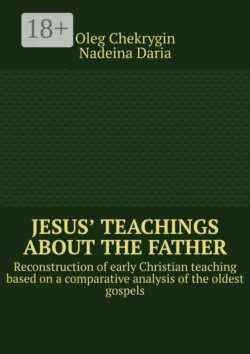Jesus’ Teachings about the Father. Reconstruction of early Christian teaching based on a comparative analysis of the oldest gospels

Oleg Chekrygin и Nadeina Daria
Тип: электронная книга
Жанр: Философия и логика
Язык: на английском языке
Стоимость: 400.00 ₽
Статус: В продаже
Издательство: Издательские решения
Дата публикации: 17.04.2024
Отзывы: Пока нет Добавить отзыв
О книге: The content of the book is the text of the author’s doctoral dissertation in philosophy in the field of theology, adapted for a wide range of readers, dedicated to the reconstruction of the Teachings of Jesus based on a critical analysis of ancient sources: the gospels of Thomas, John, Marcion, Luke, Mark and Matthew.The final part of the book contains a reconstruction of the Good News of Jesus compiled by the author from the elements of the indicated sources.